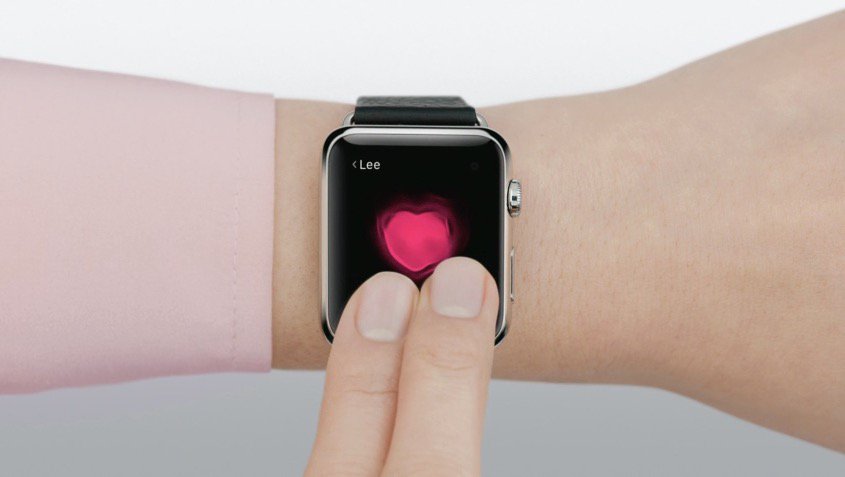
How Does Digital Touch's Heartbeat Feature Really Work?
This is a question I’ve had for some time, particularly since the optical technology Apple Watch uses to measure heart rate is noted to be a tiny bit laggy (but altogether accurate overall, rivaling impedance-based industry leaders).
Essentially, the titular question arises over the fact that it takes a few seconds for Apple Watch to accurately display your heart rate once its rear sensors are activated. (Open the heart rate Glance and see how long it takes before you get a current number.) Once it gets going, as during a workout, that’s not an issue. But for Digital Touch, it seems to be.
Try it out for yourself. Activate the Digital Touch suite, and place two fingers on the screen while putting your thumb over the common pulse-measuring area of your wrist. Compare the beats onscreen with the actual pulsing of your actual blood vessel, and you’ll almost never get them to sync up (except every now and then, like when your turn signal momentarily beats in time with that of the car in front of you.) To me, this indicates that Digital Touch’s heartbeat function is not live.
In fact, I initially thought it was just a canned, generic beat, a total fake. But after some trial and error sending my heartbeat to my gal both prior to and during exercise, it was clear that the measured cadences were appropriately different.
My theory, then, is this: When you share your heartbeat via Digital Touch, Apple Watch is not using your live measurements — it is using the last measurement taken prior to said sharing. Of course, I could be very wrong, but this angle makes a lot of sense for several reasons, not the least of which is resource efficiency. So, in my view, your Digital Touch heartbeat is your actual heartbeat…from a few minutes ago.
But it could be better and more accurate.
With one simple tweak on Apple’s end, the company might eliminate this apparent latency with a clever (and common sense) workaround: Instead of activating the rear LEDs only when the heartbeat input (two fingers touching the screen) is toggled, Apple Watch should simply start measuring your pulse the moment you launch Digital Touch itself, whatever your intent therein. This would eliminate the inherent lag re: the wearable’s current optical capabilities, and it would give users a more accurate real-time representation of their inner goings on.
Try it for yourself and let us know: Just how “real-time” is Digital Touch’s heartbeat?